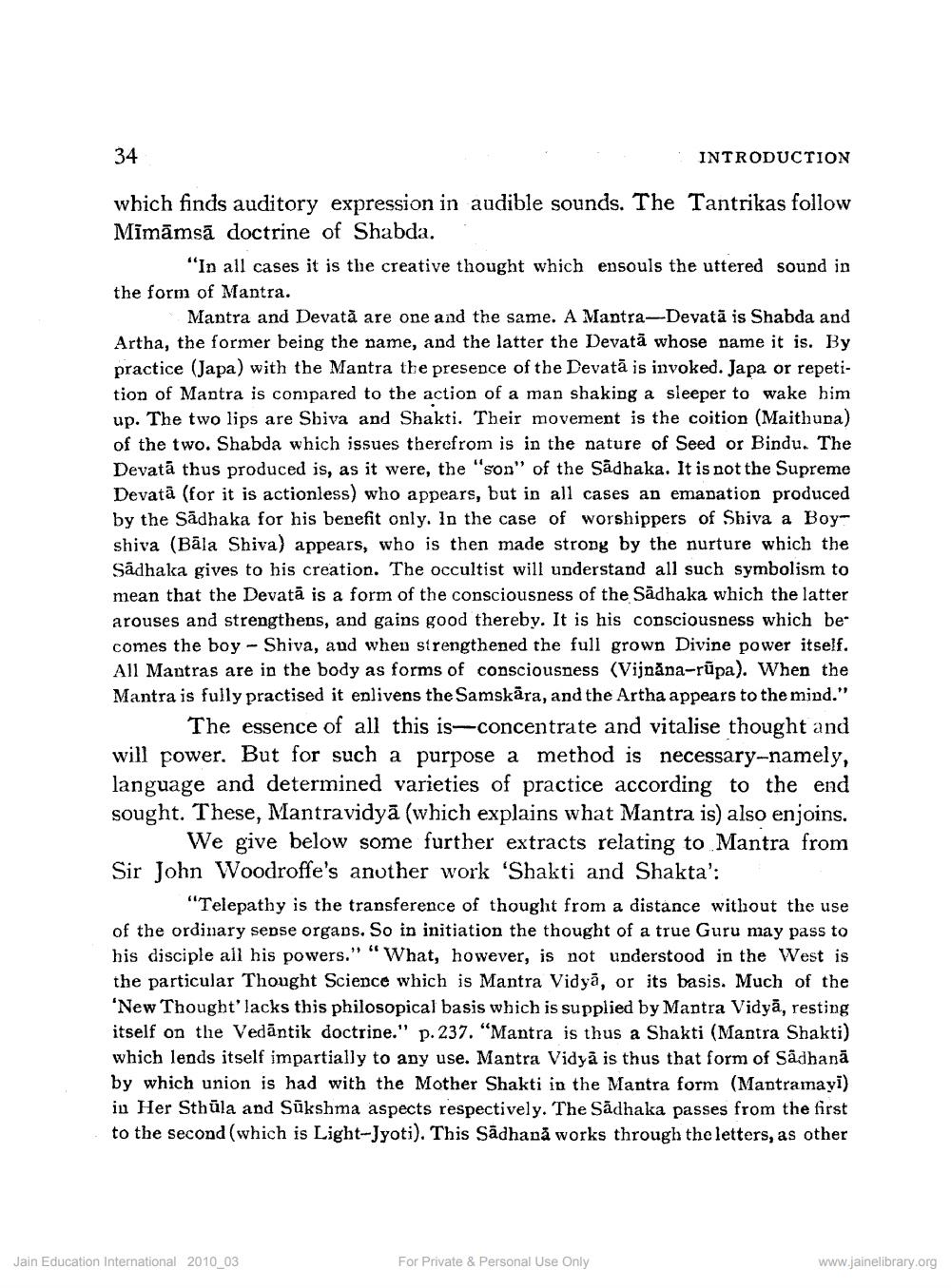________________
34
INTRODUCTION
which finds auditory expression in audible sounds. The Tantrikas follow Mīmāmsā doctrine of Shabda.
"In all cases it is the creative thought which ensouls the uttered sound in the form of Mantra.
Mantra and Devată are one and the same. A Mantra-Devatā is Shabda and Artha, the former being the name, and the latter the Devatā whose name it is. By practice (Japa) with the Mantra the presence of the Devatā is invoked. Japa or repetition of Mantra is compared to the action of a man shaking a sleeper to wake him up. The two lips are Shiva and Shakti. Their movement is the coition (Maithuna) of the two. Shabda which issues therefrom is in the nature of Seed or Bindu. The Devatā thus produced is, as it were, the "son" of the Sadhaka. It is not the Supreme Devatā (for it is actionless) who appears, but in all cases an emanation produced by the Sādhaka for his benefit only. In the case of worshippers of Shiva a Boyshiva (Bāla Shiva) appears, who is then made strong by the nurture which the Sadhaka gives to his creation. The occultist will understand all such symbolism to mean that the Devatā is a form of the consciousness of the Sadhaka which the latter arouses and strengthens, and gains good thereby. It is his consciousness which becomes the boy - Shiva, and when strengthened the full grown Divine power itself. All Mantras are in the body as forms of consciousness (Vijnana-rūpa). When the Mantra is fully practised it enlivens the Samskāra, and the Artha appears to the mind."
The essence of all this is concentrate and vitalise thought and will power. But for such a purpose a method is necessary-namely, language and determined varieties of practice according to the end sought. These, Mantravidyā (which explains what Mantra is) also enjoins.
We give below some further extracts relating to Mantra from Sir John Woodroffe's another work 'Shakti and Shakta':
"Telepathy is the transference of thought from a distance without the use of the ordinary sepse organs. So in initiation the thought of a true Guru may pass to his disciple all his powers." "What, however, is not understood in the West is the particular Thought Science which is Mantra Vidyā, or its basis. Much of the 'New Thought' lacks this philosopical basis which is supplied by Mantra Vidyā, resting itself on the Vedāntik doctrine." p. 237. "Mantra is thus a Shakti (Mantra Shakti) which lends itself impartially to any use. Mantra Vidya is thus that form of Sadhanā by which union is had with the Mother Shakti in the Mantra form (Mantramayi) in Her Sthūla and Sūkshma aspects respectively. The Sādhaka passes from the first to the second (which is Light-Jyoti). This Sādhana works through the letters, as other
Jain Education International 2010_03
For Private & Personal Use Only
www.jainelibrary.org




